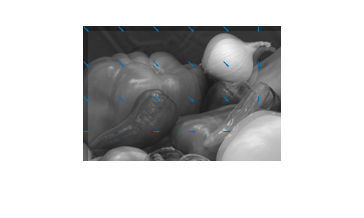vision.BlockMatcher
Estimate motion between images or video frames
Description
To estimate motion between images or video frames.
Create the
vision.BlockMatcherobject and set its properties.Call the object with arguments, as if it were a function.
To learn more about how System objects work, see What Are System Objects?
Creation
Description
blkMatcher = vision.BlockMatcherblkMatcher, that estimates motion between two images or
two video frames. The object performs this estimation using a block matching method by
moving a block of pixels over a search region.
blkMatcher = vision.BlockMatcher(Name,Value)blkMatcher =
vision.BlockMatcher('ReferenceFrameSource','Input port')
Properties
Usage
Description
Input Arguments
Output Arguments
Object Functions
To use an object function, specify the
System object™ as the first input argument. For
example, to release system resources of a System object named obj, use
this syntax:
release(obj)
Examples
Version History
Introduced in R2012a
See Also
opticalFlow | opticalFlowFarneback | opticalFlowHS | opticalFlowLK | opticalFlowLKDoG
